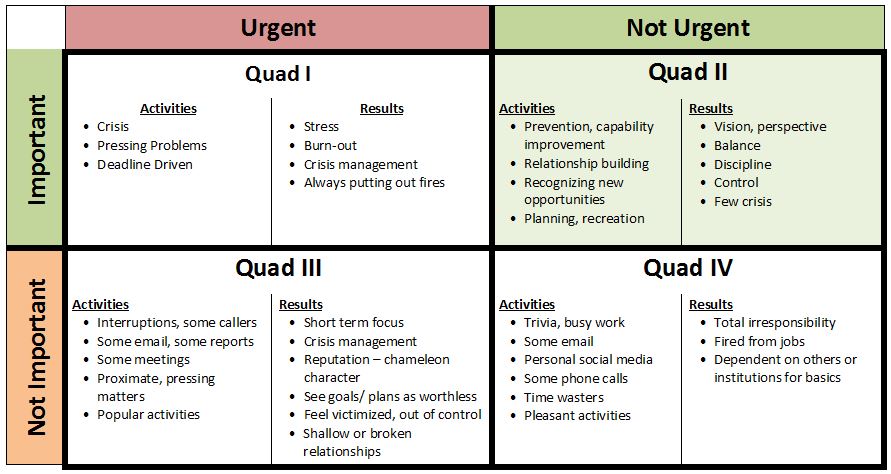What if I told you the answer to the ol’ question of “how to be more productive at work” could happen in 4 steps?
Being more productive at work seems like a goal — or rather, it should be a goal — of everyone who has a job. Remember: your life isn’t actually about work, even if it often feels like it is. Your life is about people and relationships and friendships and loved ones. That’s what you’ll miss when it fades; no one is on their death bed calling for more deliverables and projects (well, best I can tell). So if you be more productive and effective at work — so maybe you get out of there a little bit sooner, and make a little more scratch for yourself because the bosses take notice — that would be a good thing, no?
There are approximately 95 million theories and ideas (that’s a scientific number, mind you) about how to be more productive at work, including “eating your frogs in the morning” and and following Toyota’s model and eliminating time-sinks and using “Big Data and analytics” to increase productivity. Essentially, these are all just a series of methods/hacks. Something different works for every person, because people are inherently different. Welcome to life.
Here’s an interesting four-quadrant approach, though.
How to be more productive at work: The framework
This is from Stephen Covey, who wrote 7 Habits of Highly Effective People, and ‘The Covey Quadrants’ go like this:
Quadrant I: Important and Urgent tasks
Quadrant II: Important but Not-Urgent tasks
Quadrant III: Not Important but Urgent tasks
Quadrant IV: Not Important or Urgent tasks
This seems pretty logical, no?
You should spend most of your time in Quadrant I, ideally — that’s where “real work” is happening (stuff that’s important and time-sensitive). Quadrant II is why you need an e-mail folder called “Things To Do;” you can stash things there that are ultimately important but don’t require a degree of ‘hair-on-fire’ to complete. Quadrant III, best I can tell, is basically a synonym for “your e-mail Inbox,” because what is e-mail if not a listing of not-important but seemingly urgent things? E-mail is a miserable joke. Quadrant IV is my life in a nutshell, eh? No-ROI deliverables!
If I had to break this down, I’d assume you should spend about 70 percent of your work time in Quadrant I, 15 percent in Quadrant II, 10 percent in Quadrant III, and 5 percent in Quadrant IV. (We all need to occasionally do things that aren’t important or urgent; that’s also called ‘life’ a lot of the time.)
Here’s what Lifehack says, which apparently means I know nothing:
You’d like to spend as much time as possible in Quadrant II, plugging away at tasks that are important with plenty of time to really get into them and do the best possible job. This is the stuff that the QIII and QIV stuff takes time away from, so after you’ve plotted out your tasks on the Covey quadrant grid, according to your own sense of what’s important and what isn’t, work as much as possible on items in Quadrant II (and Quadrant I tasks when they arise).
That makes sense, but I guess I’d argue that the real goal of productivity is finding a way to shift Quadrant I — where it’s important AND urgent — to Quadrant II — where it’s still important but you have time to focus on it. “Urgency” in most business contexts usually means “hurry up and wait” and/or “Someone is on my ass about this, so now I’ll get on your ass about it.”
It’s really hard to move Quadrant I to Quadrant II in a world where daily deliverables murdered strategy, however. Everyone’s always focused on what they need to do right now, and that jacks up the sense of urgency to a point where it’s hard to think about anything else.
What do you think: is this an effective system, could it work for you, and is there really a way to navigate away from ‘Urgent’ items?

Reblogged this on Gr8fullsoul.
I know it’s a bit late but I have a question for you @Ted. Where on this quadrant would you put that situation: I have a coworker on far side of the world and he sent an email to a group of people (my team) for advice and help. It’s obviously not urgent matter. It’s also not important either (at least from perspective of my work and my duties). Should I avoid helping him as this situation goes in quadrant IV or should I treat it differently? I’d like to help him – I like the guy and I know the importance of good relationships but from my understanding of this framework I should avoid it as much as I can.
I’d say help him, but yes, it’s not a priority. I’m not sure of the specific quadrant, but I generally believe in helping co-workers. It creates the wrong situation otherwise.